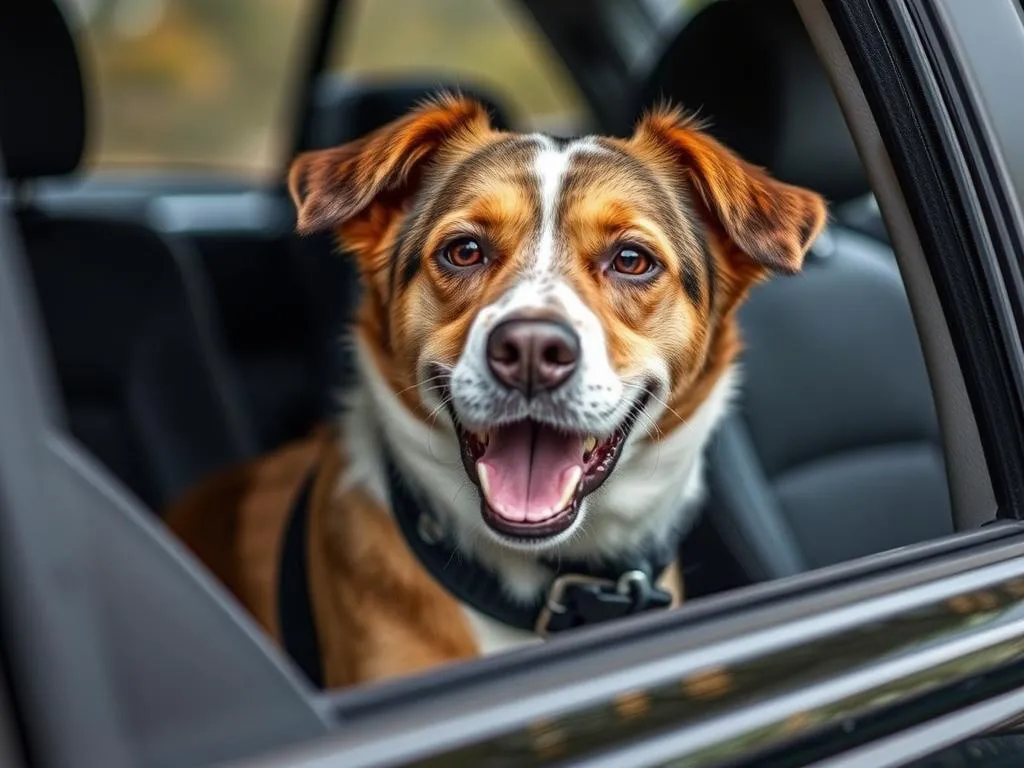
Introduction
Ensuring the health and safety of your canine companion is a vital aspect of responsible dog ownership. Just as we prioritize our health and safety during travel, we must also consider the well-being of our dogs while on the road. Understanding how to keep your dog safe in the car is crucial not only for their comfort but also for their overall health.
This article will delve into various aspects of dog health care related to car travel. From understanding canine behavior in vehicles to best practices for ensuring their safety, we will explore everything you need to know. Additionally, we will cover emergency preparedness and answer frequently asked questions, providing you with a comprehensive resource for dog car safety.
Understanding Dog Behavior in Cars
Common Behaviors
Dogs are emotional creatures, and their behavior during car rides can vary widely. Some dogs exhibit excitement, wagging their tails and eagerly looking out the window, while others may show signs of anxiety, such as whining or panting. Recognizing these signs of distress is crucial, as it can help you address your dog’s needs during travel.
Why Dogs Enjoy Car Rides
Many dogs love car rides for several reasons. They enjoy social interaction with their owners and the opportunity to explore new environments. The car offers a unique sensory experience, with different sights, sounds, and smells that stimulate their curiosity. Understanding why your dog enjoys car rides can help you create a more enjoyable and safe travel experience.
Risks of Not Keeping Your Dog Safe in the Car
Injury Risks
One of the most significant risks of not securing your dog during car travel is the potential for injury. In the event of sudden stops or accidents, unrestrained dogs can be thrown around the vehicle, leading to serious injuries. The impact of a collision can be devastating for both passengers and pets alike.
Legal Implications
Several jurisdictions have laws regarding the transportation of dogs in vehicles. Failing to adhere to these regulations can result in fines or other legal repercussions. Being aware of the local laws can help you avoid unnecessary penalties and ensure your dog’s safety.
Health Risks
Cars can become dangerously hot, leading to heatstroke and dehydration, especially in warmer weather. Conversely, cold temperatures can pose a risk of hypothermia. It’s essential to monitor your dog’s comfort level in the car and take appropriate measures to prevent these health risks.
Preparing for Car Rides
Choosing the Right Equipment
Investing in the right equipment is vital for ensuring your dog’s safety during car travel. Various types of dog seat belts and harnesses are available, designed to secure your dog safely in the car. Additionally, dog car crates and barriers can help keep your pet in a designated area, preventing distractions for the driver.
Training Your Dog for Car Travel
Training your dog to enjoy car rides can make travel much more pleasant for both of you. Start by allowing your dog to explore the car while it is stationary, rewarding calm behavior with treats. Gradually introduce short trips, reinforcing positive experiences. This training helps your dog associate the car with enjoyable outings rather than stressful situations.
Best Practices for Keeping Your Dog Safe in the Car
Securing Your Dog
Securing your dog properly is one of the most important steps in ensuring their safety. If using a seat belt or harness, follow these steps:
- Choose the right harness: Ensure it fits snugly but comfortably.
- Buckle the seat belt: Attach the seat belt clip to the harness.
- Adjust the length: Allow enough room for your dog to sit or lie down but not enough to move around excessively.
If using a crate, place it securely in the back seat or cargo area, ensuring it is stable and won’t shift during travel.
Creating a Comfortable Environment
A comfortable environment can significantly reduce your dog’s anxiety during car rides. Consider the following tips:
- Temperature regulation: Ensure the car is at a comfortable temperature, using air conditioning or heat as needed.
- Ventilation: Open windows slightly for fresh air, but ensure they are secure enough to prevent your dog from jumping out.
- Familiar items: Bring along your dog’s favorite blanket or toy to provide comfort and a sense of security.
Taking Breaks During Long Trips
Long car journeys can be taxing for dogs. It’s essential to take regular breaks for bathroom and exercise. Aim for a break every couple of hours, allowing your dog to stretch their legs and relieve themselves. When taking breaks, look for safe areas away from traffic where your dog can explore.
What to Do in Case of an Emergency
First Aid for Dogs in the Car
In the unfortunate event of an accident, knowing basic first aid for your dog can make a significant difference. Keep a pet first aid kit in your car, which should include:
- Bandages
- Gauze
- Antiseptic wipes
- Tweezers
- Emergency contact information for your veterinarian
Stay calm and assess your dog’s injuries. If they are in distress, contact a veterinarian immediately.
Emergency Contacts
Having a list of emergency contacts is essential for any pet owner. Keep your veterinarian’s contact information handy, as well as details for local emergency animal services. This information can be invaluable in a crisis.
Frequently Asked Questions (FAQs)
Can I leave my dog alone in the car?
Leaving your dog alone in a car is generally discouraged due to safety and legal considerations. Even on mild days, the temperature inside a car can rise quickly, putting your dog at risk for heatstroke. If you must leave them in the vehicle, ensure they are secure and that the car is parked in a shaded area with adequate ventilation.
What should I do if my dog gets car sick?
Car sickness is relatively common in dogs. To manage this, try the following tips:
- Acclimation: Gradually acclimate your dog to car travel by starting with short trips and gradually increasing the duration.
- Feeding: Avoid feeding your dog right before a trip. Instead, wait at least a couple of hours after eating.
- Calming aids: Consider using calming sprays or dog-safe medications if your vet approves.
How can I train a nervous dog to enjoy car rides?
Training a nervous dog to enjoy car rides requires patience and positive reinforcement. Start with short, positive experiences, gradually increasing the duration as they become more comfortable. Use treats and praise to reinforce calm behavior, and keep the atmosphere relaxed to help build their confidence.
Conclusion
Understanding how to keep your dog safe in the car is essential for every dog owner. By recognizing your dog’s behavior, preparing adequately for trips, and implementing best practices for car safety, you can ensure a safer and more enjoyable experience for both you and your furry friend.
Taking the time to address these aspects not only protects your dog but also contributes to their overall health and well-being. Remember, a safe dog is a happy dog, so prioritize their safety during every car ride.









